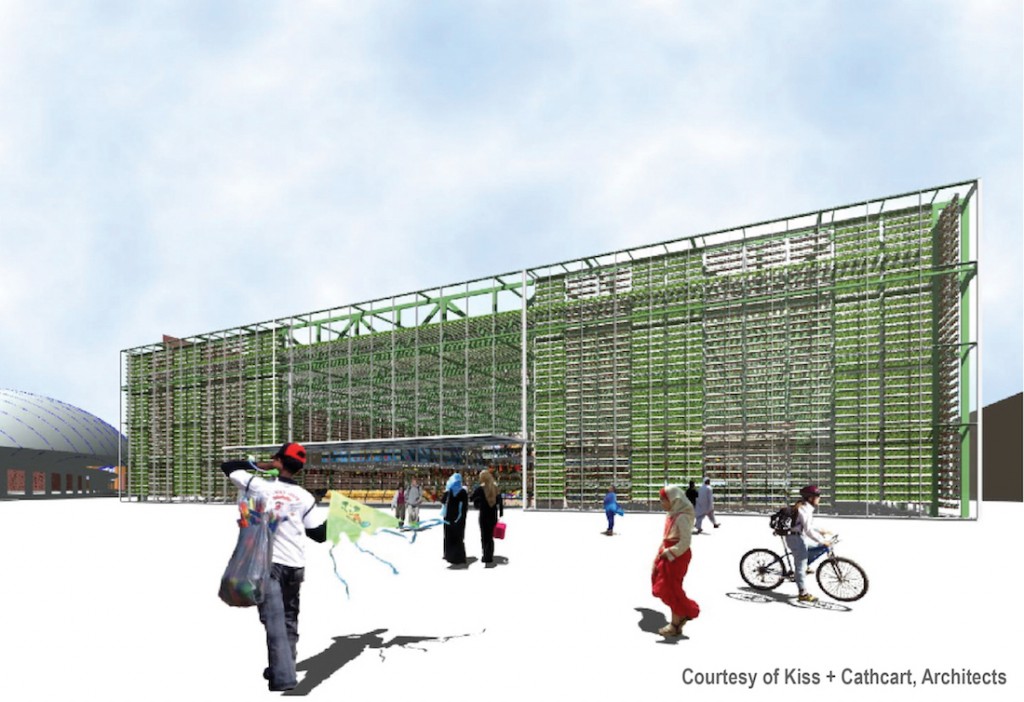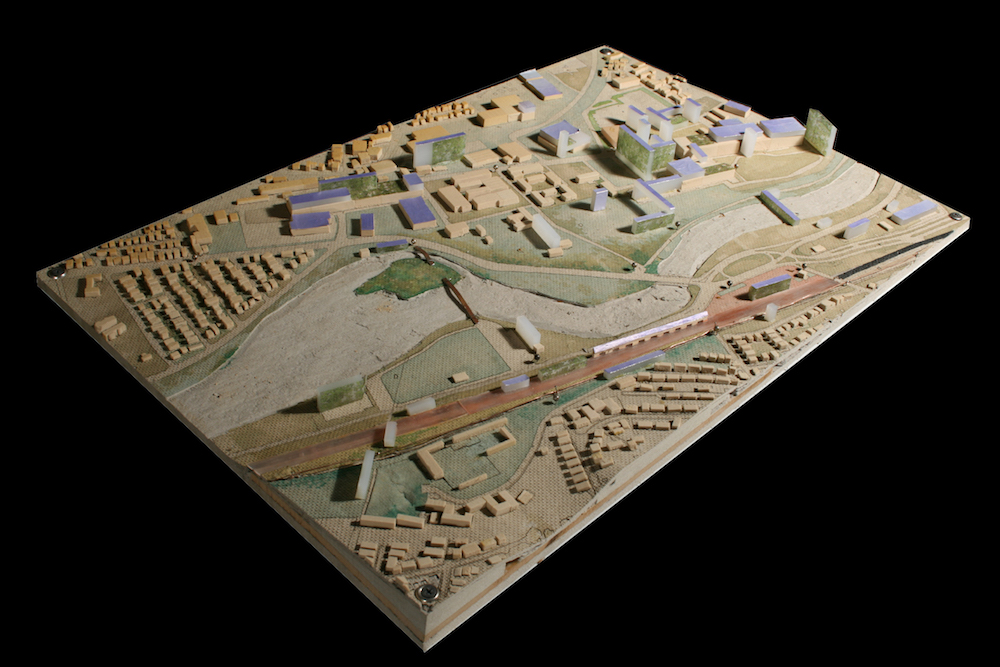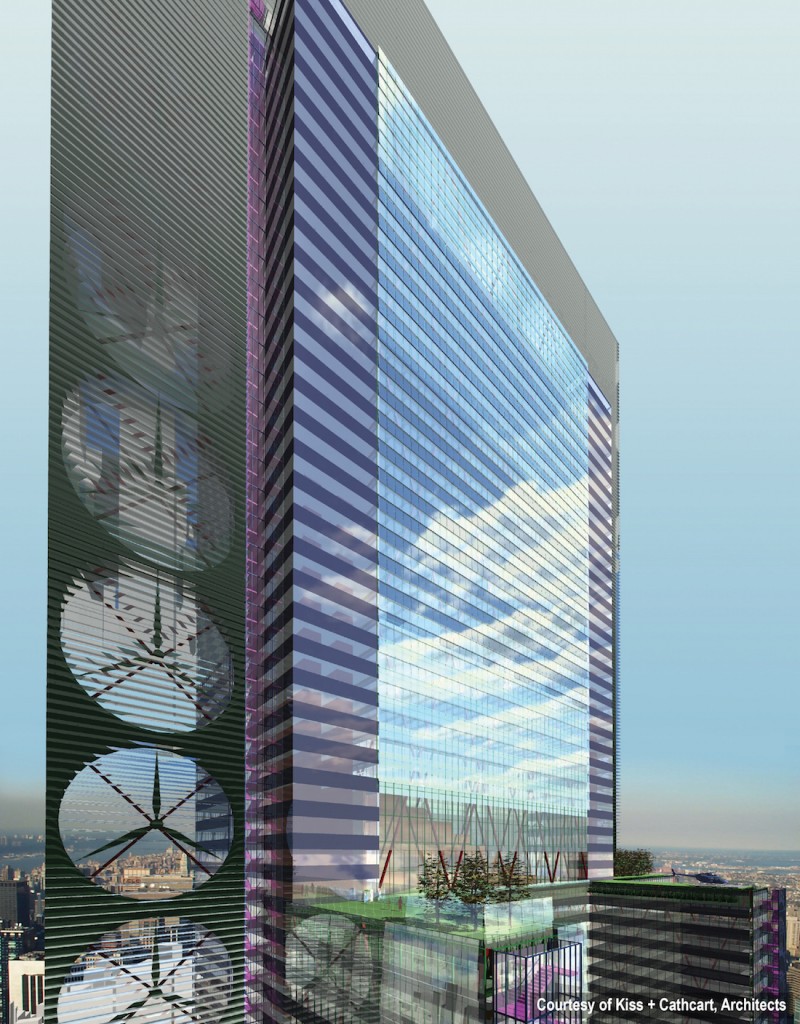Case Study C: Watertown Station


case study c: Watertown Station
Doug Suisman
This is one of the few places where the interstate highway and the Charles River are adjacent. It is typical suburban landscape: a mix of older compact neighborhoods, large footprint commercial developments, and industrial districts in transition. Three strategies are proposed:
Panoply of Movement Systems
A new intermodal station is the centerpiece of a pervasive mobility strategy that operates in every mode, at every scale and using every technology and bus-rapid transit, express-local-super-local rail services, ferries, zip-car, bike share. Together, these invade, diversify and revitalize dormant possibilities for sustainable suburban landscapes.
Shocking Intensity of Urbanized Greenery
Conventional suburban parks, playgrounds and walks are complemented by vertical farming, riparian and wetland restorations, planted roofs, community gardens, green walls, and rooftop greenhouses. Human contact with nature is constant, dramatic and a source of pleasure.
Productive Building Typologies in Sustainable Patterns
Buildings types are dictated by day-lighting, photovoltaic skins and building-integrated agriculture. Slender buildings allow daylight to penetrate; “pancake” buildings allow skylights and photovoltaics. Buildings are mixed-use, flex-use and multi-purpose.

